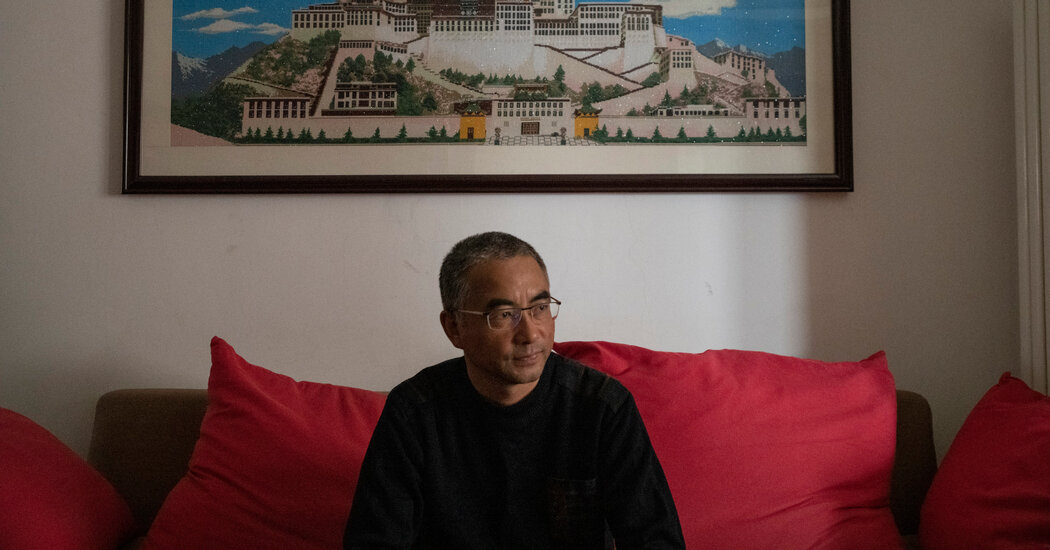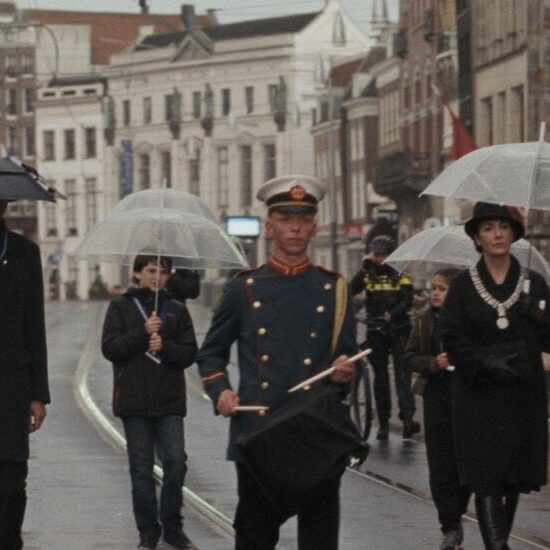
Pema Tseden, a filmmaker and author who presented an honest look at contemporary Tibetan life despite intense scrutiny from Chinese censors, died on Monday in Tibet. He was 53.
His death was announced in a statement by the China Academy of Art in Hangzhou, where he was a professor. The statement did not specify a cause or say where he died.
Tibet and its people have often been misrepresented with clichés. For the West, it was utopia, a fantasy based on the depiction of Shangri-La in the British author James Hilton’s 1933 novel, “Lost Horizon.” For the Communist Party of China, Tibetans were serfs or barbarians in need of rescue and rehabilitation, with propaganda films portraying Han cadres as liberators.
Pema Tseden (pronounced WA-ma TSAY-ten in his native dialect), who like most Tibetans had no family name and went instead by his two given names, said that as a child, he had longed for accurate representations of his home, people and culture that existing Hollywood and Chinese films didn’t provide.
“Whether it was the clothes, the customs, the manners, every element, even the smallest, was inaccurate,” he said in a 2019 interview. “Because of that, at the time, I thought that later on, if someone made films with even a little knowledge of the language of my people, the culture, the traditions of my people, it would be completely different.”
In his films, Pema Tseden rarely depicted Tibet’s Chinese population, which swelled after the Red Army seized Tibet in 1951. To elude Chinese censors, he eschewed references to the Dalai Lama, who has been seen in China as supporting Tibetan independence. This allowed him to avoid overtly political critiques while still tackling broader themes, like the loss of traditions and identity in the face of modernization.
He was the first Tibetan filmmaker working in China to shoot a film entirely in the Tibetan language. He was also the first Tibetan director to graduate from the prestigious Beijing Film Academy, which cultivated the country’s leading directors. But like all artists in China exploring ethnic minorities and religion, he was subject to additional vetting from state censors and required to submit scripts in Chinese for review.
“His challenge, of course, was to make films that would reflect a Tibetan sense of identity, a Tibetan cultural sensibility, while not upsetting the Chinese authorities,” Tenzing Sonam, a Tibetan filmmaker and writer living in Dharamshala, India, said by phone. “Pema Tseden navigated that fine line incredibly well.”
In “The Silent Holy Stones” (2005), he depicted everyday Tibetan experiences: monks becoming engrossed with television, villagers rehearsing for a New Year’s opera performance. And in “Old Dog” (2011), images of barbed-wire fences stretching across the Tibetan grasslands examined the power of the state and the complexities of privatizing ancestral lands.
His movies were “not just about Tibet,” Tsering Shakya, a Tibetan historian and scholar at the University of British Columbia in Vancouver, said in an interview. “This is about China and people who are left behind by China’s economic miracle.”
As Pema Tseden’s clout grew, China’s film industry and its audiences began to accept Tibetan as a language used on the big screen. And by combining Tibetan traditions of oral storytelling and song with modern filmmaking formats, his movies gave rise to an entirely new genre that some called the Tibetan New Wave.
“The stories his films contained — which are always meticulously framed and exquisitely modulated — speak powerful truths in the gentlest of voices,” said Shelly Kraicer, a Chinese cinema curator and researcher who wrote subtitles for some of Pema Tseden’s work. “He’s a key world filmmaker.”
He sought to mentor a new generation of Tibetan filmmakers, including Sonthar Gyal, Dukar Tserang, Lhapal Gyal and Pema Tseden’s, son, Jigme Trinley, who went on to direct their own films. Drivers, assistants and other members of the crew sometimes juggled more than one role, appearing as extras and coaching actors in regional dialects.
“He created from scratch an embryonic Tibetan film circle, film industry,” Françoise Robin, a professor of Tibetan language and literature at the National Institute for Oriental Languages and Civilizations in Paris who knew Pema Tseden for over two decades, said by phone. “He’s very faithful in friendship. Some people worked with him for 10 years.”
Pema Tseden was born on Dec. 3, 1969, in Qinghai Province, part of a northeastern region of Tibet traditionally known as Amdo. His parents were farmers and herders.
From a young age, he immersed himself in classical texts and spent hours copying out Buddhist scriptures by hand after school. He worked as a teacher for four years before studying Tibetan literature and translation at the Northwest University for Nationalities in Lanzhou. He then worked for several years as a civil servant in his home province.
Starting in 1991, he published short stories set in Tibet, written in both Tibetan and Chinese, about individuals confronted with sweeping changes. They underscored the importance of forging a connection with nature and animals, showing “the complexity of life in the simplest language,” said Jessica Yeung, a professor at Hong Kong Baptist University who knew Pema Tseden for a decade and translated his work. He later adapted some of his stories into films.
After attending the Beijing Film Academy in the early 2000s, he released “The Silent Holy Stones” to critical acclaim, as well as several other films. A decade later, “Tharlo” (2015), about the journey of a shepherd who must travel outside his isolated village to register for a government ID, premiered at the Venice Film Festival. It won numerous awards, including a Golden Horse Award for best adapted screenplay in Taiwan. Among Tibetans, it also became a seminal work for aspiring filmmakers within a few years.
“A Tibetan film should show Tibetan life,” Pema Tseden said in an undated interview that was recently released by Kangba TV, a Tibetan-language broadcaster. “In my case, from my first film onward, I wanted my movies to absolutely include characters who are Tibetan, who would all speak Tibetan, and whose behavior and way of thinking were Tibetan. This is what makes Tibetan films different.”
Pema Tseden’s subsequent films benefited from his higher profile. “Jinpa” (2018), about a truck driver who runs over a sheep and then picks up a hitchhiker, was produced by the Hong Kong auteur Wong Kar-wai’s Jet Tone Films and premiered at the Venice Film Festival, where it won the Orizzonti Award for best screenplay. “Balloon” (2019), about a family coping with an unexpected pregnancy amid China’s family planning laws, also premiered in Venice. A forthcoming film, “Snow Leopard,” about the tense relationship between humans and predatory animals, is currently in postproduction. At his death, he was working on another film.
Information on survivors in addition to his son was not immediately available.
Li You contributed research.













